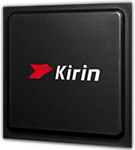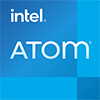
Intel Celeron N4100 Benchmark, Test and specs
Last updated:
The Intel Celeron N4100 is a 4 core processor. It can handle 4 threads simultaneously and was introduced in Q4/2017. The Intel Celeron N4100 is based on the 9. generation of the Intel Celeron series and requires a mainboard with the socket BGA 1090. The Intel Celeron N4100 scores 394 points with one CPU core in the Geekbench 5 benchmark. When using all CPU cores, the result is 1,385 points.

| Name: | Intel Celeron N4100 |
|---|---|
| Family: | Intel Celeron (165) |
| CPU group: | Intel Celeron J4000/N4000/N5000 (11) |
| Architecture: | Gemini Lake |
| Segment: | Mobile |
| Generation: | 9 |
| Predecessor: | -- |
| Successor: | Intel Celeron N5100 |
CPU Cores and Base Frequency
The 4 CPU cores of the Intel Celeron N4100 clock with 1.10 GHz (2.40 GHz). The number of CPU cores and the clock frequency of the processor are largely responsible for the overall performance.
| CPU Cores / Threads: | 4 / 4 |
|---|---|
| Core architecture: | normal |
| Cores: | 4x |
| Hyperthreading / SMT: | No |
|---|---|
| Overclocking: | No |
| Frequency: | 1.10 GHz |
| Turbo Frequency (1 Core): | 2.40 GHz |
| Turbo Frequency (4 Cores): | 2.40 GHz |
Internal Graphics
With the Intel UHD Graphics 600, the Intel Celeron N4100 has an build in graphic solution. It has 12 SM processors, which have a total of 96 texture shaders. The iGPU not only enables games, but also significantly accelerates video playback.
| GPU name: | Intel UHD Graphics 600 |
|---|---|
| GPU frequency: | 0.20 GHz |
| GPU (Turbo): | 0.70 GHz |
| Compute units: | 12 |
| Shader: | 96 |
| Hardware Raytracing: | No |
| Release date: | Q4/2017 |
| Max. displays: | 3 |
|---|---|
| Generation: | 9.5 |
| Direct X: | 12 |
| Technology: | 14 nm |
| Max. GPU Memory: | 8 GB |
| Frame Generation: | No |
Hardware codec support
Processors that have an integrated graphics can play videos faster and more efficiently. This can have a positive effect on the battery life of notebooks, for example.
| h265 / HEVC (8 bit): | Decode / Encode |
|---|---|
| h265 / HEVC (10 bit): | Decode / Encode |
| h264: | Decode / Encode |
| VP8: | Decode / Encode |
| VP9: | Decode / Encode |
| AV1: | No |
|---|---|
| AVC: | Decode / Encode |
| VC-1: | Decode |
| JPEG: | Decode / Encode |
Memory & PCIeThe Intel Celeron N4100 supports up to 8 GB memory in up to 2 (Dual Channel) memory channels. This results in a maximum memory bandwidth of 38.4 GB/s. |
|
| Memory type: | Memory bandwidth: |
|---|---|
| LPDDR4-2400 DDR4-2400 | 38.4 GB/s 38.4 GB/s |
| Max. Memory: | 8 GB |
| Memory channels: | 2 (Dual Channel) |
| ECC: | No |
| PCIe: | 2.0 x 6 |
| PCIe Bandwidth: | 3.0 GB/s |
Thermal ManagementWith the TDP, the processor manufacturer specifies the cooling solution required for the processor. The Intel Celeron N4100 has a TDP of 6 W. |
|
|---|---|
| TDP (PL1 / PBP): | 6 W |
| TDP (PL2): | -- |
| TDP up: | -- |
| TDP down: | 4.8 W |
| Tjunction max.: | 105 °C |
Technical details
The Intel Celeron N4100 has a 4.00 MB large cache. The processor is manufactured in 14 nm. Modern production increases the efficiency of the processor.
| Technology: | 14 nm |
|---|---|
| Chip design: | Monolithic |
| Socket: | BGA 1090 |
| L2-Cache: | -- |
| L3-Cache: | 4.00 MB |
| AES-NI: | Yes |
| Operating systems: | Windows 10, Windows 11, Linux |
| Virtualization: | VT-x, VT-x EPT, VT-d |
|---|---|
| Instruction set (ISA): | x86-64 (64 bit) |
| ISA extensions: | SSE4.1, SSE4.2 |
| Release date: | Q4/2017 |
| Release price: | -- |
| Part Number: | -- |
| Documents: | Technical data sheet |
Rate this processor
Benchmark results

The benchmark results for the Intel Celeron N4100 have been carefully checked by us. We only publish benchmark results that have been created by us or that have been submitted by a visitor and then checked by a team member. All results are based on and fullfill our benchmark guidelines.
Screenshots:
Screenshots:
- Cinebench R20 on Zotac ZBOX CI329 nano (8GB DDR4-2400), Windows 10
- Cinebench R15 on Zotac ZBOX CI329 nano (8GB DDR4-2400), Windows 10
- AIDA64 Cache & Memory Benchmark on Zotac ZBOX CI329 nano (8GB DDR4-2400), Windows 10
- AIDA64 CPUID on Zotac ZBOX CI329 nano (8GB DDR4-2400), Windows 10
- AIDA64 iGPU Benchmark on Zotac ZBOX CI329 nano (8GB DDR4-2400), Windows 10
Geekbench 5, 64bit (Single-Core)
Geekbench 5 is a cross plattform benchmark that heavily uses the systems memory. A fast memory will push the result a lot. The single-core test only uses one CPU core, the amount of cores or hyperthreading ability doesn't count.
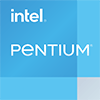
|
Intel Pentium E6300
2C 2T @ 2.80 GHz |
||

|
AMD Athlon II X3 455
3C 3T @ 3.30 GHz |
||

|
Intel Pentium E5500
2C 2T @ 2.80 GHz |
||
|
|
Intel Celeron N4100
4C 4T @ 2.40 GHz |
||

|
AMD Athlon II X2 250e
2C 2T @ 3.00 GHz |
||

|
Intel Celeron 3215U
2C 2T @ 1.70 GHz |
||

|
Intel Celeron 3755U
2C 2T @ 1.70 GHz |
||
Geekbench 5, 64bit (Multi-Core)
Geekbench 5 is a cross plattform benchmark that heavily uses the systems memory. A fast memory will push the result a lot. The multi-core test involves all CPU cores and taks a big advantage of hyperthreading.

|
Intel Core m3-7Y30
2C 4T @ 2.00 GHz |
||

|
Intel Pentium D1508
2C 4T @ 2.60 GHz |
||

|
Intel Celeron G4900T
2C 2T @ 2.80 GHz |
||
|
|
Intel Celeron N4100
4C 4T @ 2.40 GHz |
||
|
|
HiSilicon Kirin 710
8C 8T @ 2.20 GHz |
||

|
Intel Core i3-4100M
2C 4T @ 2.50 GHz |
||

|
Intel Core i5-5250U
2C 4T @ 2.50 GHz |
||
Geekbench 6 (Single-Core)
Geekbench 6 is a benchmark for modern computers, notebooks and smartphones. What is new is an optimized utilization of newer CPU architectures, e.g. based on the big.LITTLE concept and combining CPU cores of different sizes. The single-core benchmark only evaluates the performance of the fastest CPU core, the number of CPU cores in a processor is irrelevant here.

|
Intel Celeron 1005M
2C 2T @ 1.90 GHz |
||

|
Intel Pentium J4205
4C 4T @ 2.60 GHz |
||

|
MediaTek MT8176
6C 6T @ 2.00 GHz |
||
|
|
Intel Celeron N4100
4C 4T @ 2.40 GHz |
||

|
Intel Celeron 3215U
2C 2T @ 1.70 GHz |
||

|
Intel Celeron 3755U
2C 2T @ 1.70 GHz |
||

|
Qualcomm Snapdragon 665
8C 8T @ 2.00 GHz |
||
Geekbench 6 (Multi-Core)
Geekbench 6 is a benchmark for modern computers, notebooks and smartphones. What is new is an optimized utilization of newer CPU architectures, e.g. based on the big.LITTLE concept and combining CPU cores of different sizes. The multi-core benchmark evaluates the performance of all of the processor's CPU cores. Virtual thread improvements such as AMD SMT or Intel's Hyper-Threading have a positive impact on the benchmark result.

|
Intel Core i5-2450M
2C 4T @ 2.50 GHz |
||

|
Intel Core i5-2510E
2C 4T @ 2.50 GHz |
||

|
Intel Core i5-2515E
2C 4T @ 2.50 GHz |
||
|
|
Intel Celeron N4100
4C 4T @ 2.40 GHz |
||
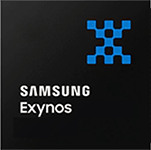
|
Samsung Exynos 8890
8C 8T @ 2.60 GHz |
||

|
Intel Core i7-3517U
2C 4T @ 2.50 GHz |
||

|
Intel Core i5-4202Y
2C 4T @ 1.60 GHz |
||
Cinebench R20 (Single-Core)
Cinebench R20 is the successor of Cinebench R15 and is also based on the Cinema 4 Suite. Cinema 4 is a worldwide used software to create 3D forms. The single-core test only uses one CPU core, the amount of cores or hyperthreading ability doesn't count.

|
Intel Core m5-6Y57
2C 4T @ 2.80 GHz |
||

|
AMD Athlon II X4 645
4C 4T @ 3.10 GHz |
||

|
Intel Core i3-4005U
2C 4T @ 1.70 GHz |
||
|
|
Intel Celeron N4100
4C 4T @ 2.40 GHz |
||

|
AMD Athlon II X4 640
4C 4T @ 3.00 GHz |
||
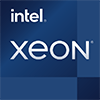
|
Intel Xeon E7-8870 v2
15C 30T @ 2.90 GHz |
||

|
AMD Athlon II X4 635
4C 4T @ 2.90 GHz |
||
Cinebench R20 (Multi-Core)
Cinebench R20 is the successor of Cinebench R15 and is also based on the Cinema 4 Suite. Cinema 4 is a worldwide used software to create 3D forms. The multi-core test involves all CPU cores and taks a big advantage of hyperthreading.

|
Intel Core m3-8100Y
2C 4T @ 1.10 GHz |
||

|
Intel Celeron N4120
4C 4T @ 2.50 GHz |
||

|
Intel Core i3-4005U
2C 4T @ 1.70 GHz |
||
|
|
Intel Celeron N4100
4C 4T @ 2.40 GHz |
||

|
Intel Core i7-4510U
2C 4T @ 2.70 GHz |
||

|
Intel Core i3-2330M
2C 4T @ 2.20 GHz |
||

|
Intel Core M-5Y10c
2C 4T @ 1.60 GHz |
||
iGPU - FP32 Performance (Single-precision GFLOPS)
The theoretical computing performance of the internal graphics unit of the processor with simple accuracy (32 bit) in GFLOPS. GFLOPS indicates how many billion floating point operations the iGPU can perform per second.

|
Intel Celeron 2961Y
Intel HD Graphics (Haswell GT1) @ 0.85 GHz |
||

|
Intel Pentium 3560Y
Intel HD Graphics (Haswell GT1) @ 0.85 GHz |
||

|
Intel Pentium 3561Y
Intel HD Graphics (Haswell GT1) @ 0.85 GHz |
||
|
|
Intel Celeron N4100
Intel UHD Graphics 600 @ 0.70 GHz |
||

|
Intel Celeron J3355E
Intel HD Graphics 500 @ 0.70 GHz |
||

|
Intel Celeron J3455E
Intel HD Graphics 500 @ 0.70 GHz |
||

|
Intel Celeron J4115
Intel UHD Graphics 600 @ 0.70 GHz |
||
Estimated results for PassMark CPU Mark
Some of the CPUs listed below have been benchmarked by CPU-monkey. However the majority of CPUs have not been tested and the results have been estimated by a CPU-monkey’s secret proprietary formula. As such they do not accurately reflect the actual Passmark CPU mark values and are not endorsed by PassMark Software Pty Ltd.

|
Intel Core i5-4360U
2C 4T @ 2.90 GHz |
||

|
Qualcomm Snapdragon 712
8C 8T @ 2.30 GHz |
||

|
Intel Core i7-4610Y
2C 4T @ 1.70 GHz |
||
|
|
Intel Celeron N4100
4C 4T @ 2.40 GHz |
||

|
Intel Celeron G4920
2C 2T @ 3.20 GHz |
||
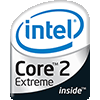
|
Intel Core 2 Extreme QX9650
4C 4T @ 3.00 GHz |
||
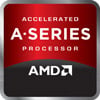
|
AMD A6-6310
4C 4T @ 2.40 GHz |
||
CPU-Z Benchmark 17 (Multi-Core)
The CPU-Z benchmark measures a processor's performance by measuring the time it takes the system to complete all benchmark calculations. The faster the benchmark is completed, the higher the score.
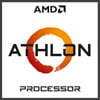
|
AMD Athlon Silver 3050U
2C 2T @ 2.30 GHz |
||

|
Intel Pentium Gold 5405U
2C 4T @ 2.30 GHz |
||

|
AMD A8-7650K
4C 4T @ 3.30 GHz |
||
|
|
Intel Celeron N4100
4C 4T @ 1.10 GHz |
||

|
Intel Celeron G4900
2C 2T @ 3.10 GHz |
||

|
Intel Core i3-530
2C 4T @ 2.93 GHz |
||

|
Intel Core i5-2430M
2C 4T @ 2.40 GHz |
||
Cinebench R15 (Single-Core)
Cinebench R15 is the successor of Cinebench 11.5 and is also based on the Cinema 4 Suite. Cinema 4 is a worldwide used software to create 3D forms. The single-core test only uses one CPU core, the amount of cores or hyperthreading ability doesn't count.

|
Intel Core i3-4100U
2C 4T @ 1.80 GHz |
||

|
AMD A10-9600P
4C 4T @ 3.30 GHz |
||

|
AMD A12-9700P
4C 4T @ 3.40 GHz |
||
|
|
Intel Celeron N4100
4C 4T @ 2.40 GHz |
||

|
Intel Celeron 3867U
2C 2T @ 1.80 GHz |
||

|
AMD Athlon II X4 640
4C 4T @ 3.00 GHz |
||

|
Intel Core i5-3339Y
2C 4T @ 2.00 GHz |
||
Cinebench R15 (Multi-Core)
Cinebench R15 is the successor of Cinebench 11.5 and is also based on the Cinema 4 Suite. Cinema 4 is a worldwide used software to create 3D forms. The multi-core test involves all CPU cores and taks a big advantage of hyperthreading.

|
AMD A10-4657M
4C 4T @ 3.20 GHz |
||

|
Intel Celeron G1820
2C 2T @ 2.70 GHz |
||
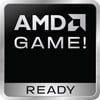
|
AMD Phenom II X3 705e
3C 3T @ 2.50 GHz |
||
|
|
Intel Celeron N4100
4C 4T @ 2.40 GHz |
||

|
Intel Pentium G2010
2C 2T @ 2.80 GHz |
||

|
Intel Core M-5Y31
2C 4T @ 1.80 GHz |
||

|
Intel Celeron G1630
2C 2T @ 2.80 GHz |
||
Benchmarks

Geekbench 5 (SC)
2,488 entries
2,488 entries

Geekbench 5 (MC)
2,461 entries
2,461 entries

Geekbench 6 (SC)
1,755 entries
1,755 entries

Geekbench 6 (MC)
1,703 entries
1,703 entries

Cinebench R20 (SC)
656 entries
656 entries

Cinebench R20 (MC)
604 entries
604 entries

FP32 SP (iGPU)
2,042 entries
2,042 entries
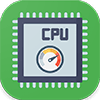
PassMark CPU-Mark
2,392 entries
2,392 entries

CPU-Z Benchmark 17 (MC)
733 entries
733 entries

Cinebench R15 (SC)
1,106 entries
1,106 entries

Cinebench R15 (MC)
1,101 entries
1,101 entries

Geekbench 3 (SC)
942 entries
942 entries

Geekbench 3 (MC)
938 entries
938 entries
Description of the processor
The Intel Celeron N4100 is a very economical with its TDP of only 6 watts, but not quite so powerful processor. He is used in very favorable notebooks (for example, the Acer Chromebook 314 or the Lenovo Chromebook 500E), in a few tablets (for example, the Lenovo Tablet 10) and in various mini PCs (for example, the ASUS Mini PC PN40-BC100MC or The Zotac Zbox CI329 Nano).The processor has 4 physical cores, which, however, does not support hyperthreading, nor are overclockable. The basic clock processor cores is 1.10 gigahertz. In turbomodus, the cycle is increased to up to 2.40 gigahertz, while it does not matter if only one or equal to all 4 cores are utilized.
As nowadays in almost all consumer processors, a graphics unit is also integrated in the Intel Celeron N4100. This is the "Intel UHD Graphics 600" originating from the 10-generation of Intels graphics processors. This clocks in standard mode with up to 200 megahertz and in turbomodus with up to 700 megahertz. The GPU equipped with 12 execution units supports DirecTX version 12 and the image output on up to 3 monitors in parallel.
Since the graphics unit supports the decoding of all important video codecs in hardware, the processor is ideal for creating a power-saving media PC. For example, the aforementioned Zotac Zbox CI329 can be ideally used.
The Intel Celeron N4100 has a total of 2 memory channels and supports DDR4 and LPDDR4 memory, each with up to 2400 megahertz. The 4 megabytes of L3 cache accelerates the data transmission between memory and processor.
The processor was launched in the fourth quarter of 2017 and is based on the "Gemini Lake" architecture. The Intel Celeron N4100 is manufactured in the 14 nanometer process.
Popular comparisons
back to index



